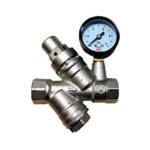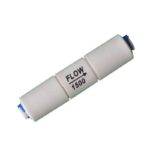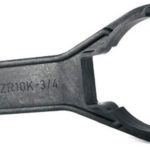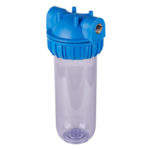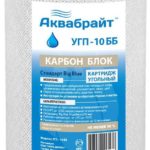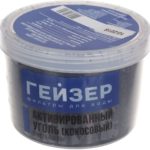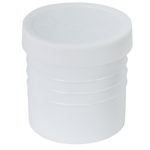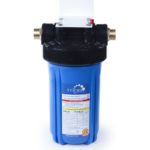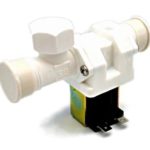For high-quality post-treatment of tap water or treatment of borehole / well, it is convenient to use autonomous systems. They do not take up much space, they effectively cope with their tasks. Replacement filters for water purification are especially popular. System maintenance is simple and straightforward even for a novice master. In order to ensure a consistently high quality of liquid purification, it is important to purchase and change purification components in installations on time. The frequency of these actions depends on the volume of liquid to be passed through and the type of filter used.
Types of spare parts for water filters
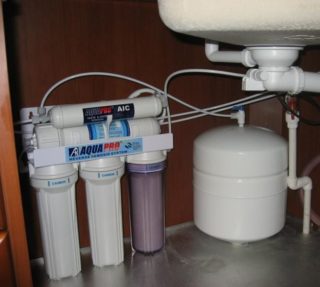
If a reverse osmosis unit is used in the house, the following parts will come in handy:
- Flask for filters. Has the shape of a cylinder. The transparent body is made of durable and environmentally friendly plastic. When replacing the cartridge, be sure to wash the flask with running water.
- Replaceable cassettes for each of the units. The frequency of their replacement is 4-6 months.
- Key. A special device that helps to dismantle the flask with a filter insert and install it back.
- Pressure regulator. Adjusts the atmosphere levels on both sides of the membrane.
- Flow restrictor. Controls the volumes of purified liquid in relation to discharged into the sewer.
- Pressure boosting pump. Especially useful for residents of the upper floors in the house.
If necessary, a storage tank can be used for a reverse osmosis installation, if the space under the sink in the apartment allows. The tanks have a volume of 5 to 20 liters.
Spare parts for complex water treatment plants
The following components are subject to periodic replacement:
- Sorption backfills made of charcoal, coconut and other coals.
- Salt tablets for liquid mineralization.
- Replaceable body-flasks.
- Control valves.
- Coarse and fine filters.
In such installations, water undergoes several stages of processing - removal of suspended impurities, deferrization, desalting, neutralization of chlorine and nitrates, enrichment with minerals.
Sorption equipment accessories
These types of treatment systems work using special sorption bedding. Thanks to them, the liquid gets rid of harmful impurities that settle in the bookmarks, over time making it difficult for water to pass through all layers of the cartridge. Therefore, regular replacement of the carbon filler is necessary.
Thanks to the sorption layers, the taste and color / odor of the liquid is improved many times over. To improve the capabilities of the cleaning cartridge, ion-exchange components are added to the coal. They neutralize bacteria, oil products, pesticides and nitrates, heavy metals.
The efficiency of the sorbent depends on the size of its granules, the temperature of the treated liquid, and the pH of the water.
Spare parts for the nozzle
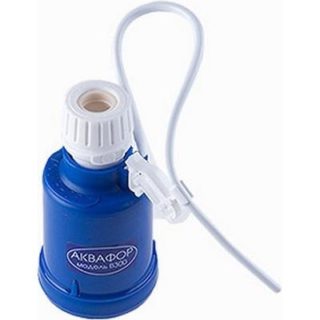
This type of wastewater treatment plant is presented as a part that can be screwed onto a tap. Such a filter is flow-through. It does not give large volumes of liquid per unit of time, but it works properly.The main thing is to change the gaskets for the water filters in time.
Filter jug
This is the simplest type of cleaning equipment in the house. It works on the principle of a container in which water is collected and then passed through a carbon cartridge installed at the bottom of the tank. Thus, the already treated liquid is collected in the receiver.
The main replaceable element of the jug is a carbon cartridge. This is a plastic flask with several layers of filter media. Water passes these levels and is purified from impurities.
In carbon filter jugs, the density of the filling is not very high. Otherwise 2-3 liters of water would pass through the cartridge for too long.
Component quality
All consumables for treatment systems must meet the following requirements:
- manufacturing in accordance with GOST and sanitary standards;
- good resource of efficiency;
- the quality of the materials used.
When buying a spare part, you should pay attention to its price. Moreover, a cheap solution is not synonymous with a bad one.
How to choose filter parts
All removable components require periodic replacement. You need to choose them according to the following parameters:
- Manufacturer. As a rule, each manufacturer offers its own branded consumables to the consumer. If we neglect this and buy, say, a cartridge for the Barrier jug from the Aquaphor manufacturer, it will not fit in the thread section or the height of the receiving tank.
- Purpose, task. Before buying a replacement cartridge, you need to decide on its main function - softening, deironing, getting rid of chlorine, etc. For this, it is recommended to carry out a complete analysis of the water.
- If a separate coal bed is purchased, it is purchased according to the size of the granules and the type of sorbent. Granules of certain parameters are intended for each type of such a filtering installation. If you buy smaller ones, they will be poured out along with the water under the force of the flow. If you buy larger granules, the liquid will pass through them faster than necessary. Thus, an inadequate water purification occurs.
- The size of the membrane insert. It is measured in microns. For front flasks, membranes with cells of 0.5 μm are intended. For distant ones - 1 micron.
Before buying a replacement element, it is important to figure out whether the master can replace it himself or whether it is better to invite a specialist.
Installation sequence
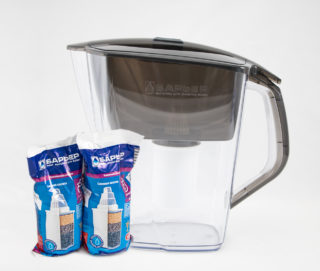
When replacing the filter cartridge, the actions of the wizard change depending on the type of cleaning equipment. The procedure for installing water purification cartridges for a jug is as follows:
- The old cassette is unscrewed from the receiving tank counterclockwise.
- Both flasks (lower and upper) are washed with running water.
- The new cartridge is released from its packaging and screwed into the threaded hole clockwise. The cassette should end up with the perforation down.
- The receiving tank is inserted into the lower one.
It is better to drain the first portions of water passed through the cartridge. They collected the remains of coal dust from the cassette.

Replacing the membrane element in reverse osmosis plants is performed as follows:
- Shut off the water supply to the kitchen or house / apartment.
- Open the cold water tap. This allows the pressure in the system to be relieved and the flask and diaphragm can be removed more easily.
- Disconnect the adapters (adapters), hoses leading to the block, and unscrew it with a special wrench. It often comes bundled with the equipment. Previously, a container must be placed under the flask to discharge the remaining water into it.
- Free the reservoir from the old fill and rinse with running water.
- Load a new membrane / backfill / cassette and install the flask, observing the reverse sequence: screw on the reservoir, connect the tubes to it.
- Open the water supply to the house and check the tightness of the system.
When changing cartridges, it is advisable to coat all sealing gums with silicone sealant or at least petroleum jelly. This will keep them elastic and extend their service life.
If the master needs to purify hot water, he will have to install a main filter. Most often they use carbon fillers. The replacement of the backfill is carried out by analogy with changing the membrane in a reverse osmosis filter.

